Intellectual property covers two areas.
Firstly, industrial property, which includes :
- patents,
- brands,
- designs and models
But also literary and artistic property, which includes :
- copyright
- ancillary rights
While these two fields are usually quite distinct, they can cross paths, especially when it comes to software.
The basic protection of software is copyright, but certain elements or combinations of elements may be patentable.
So what is copyright protection, and how is it acquired? Here’s a quick overview of this special intellectual property right.
1. What is copyrightable?
French law provides copyright protection for the following works:
- all written works, whether literary, artistic or even scientific,
- all conferences and speeches
- all dramatic works
- all works relating to the performing arts (choreography, pantomimes, etc.) whose implementation is fixed in writing
- all musical works
- all graphic works
- all audiovisual works
- all works of applied art
- all drawings, plans and sketches, including scientific ones
- all software
This is a non-exhaustive list, with the aim of enabling new formats to benefit from this protection in the future.
To be eligible for protection, the work in question must be a work of the mind. There is only one condition for this: originality.
It’s not a question of originality in the common sense of the term, but rather the imprint of the author’s personality. The work must reflect the author’s creative contribution, his personal touch, his signature. For example, for a photograph, originality is found in the choice of framing, light or color. For software, it’s the source code that must reflect the author’s personality.
2. How can I obtain copyright on my work?
Copyright does not require registration; it arises from the simple fact of creating a work, even if it has not been disclosed or even completed.
Of course, we’re talking about French copyright here, and the rule is the same for most countries around the world. However, some countries, such as the United States, still require additional registration. This is known as copyright. The United States still has to comply with the “no registration of copyright” rule in order to recognize it, but if you want greater security for exploiting your work in this territory, copyright registration is not insignificant.
3. What can we do with Copyright?
Copyright has two distinct aspects: moral rights and economic rights.
Moral rights
Moral rights are the rights inherent in the author and the work itself. Moral rights therefore include the right to respect for authorship, such as :
- respect for the author’s name,
- of his pseudonym
- anonymity,
- respect for the author’s right of disclosure,
- the right of withdrawal
- Etc…
and the right to respect for the integrity of the work (prohibition on destroying or modifying the work without the author’s authorization, and prohibition on preventing the author from doing so if he so decides).
Under French law, moral rights are perpetual, inalienable and imprescriptible. Thus, if a work of the mind can be transferred, it is only the transfer of the economic rights of the work and not the moral rights, except in special cases provided for by law (e.g. collective works, software published by employees) or recognized by judges.
Economic rights
Economic rights group together the rights to exploit, enhance and generate profit from a work. There are two categories of rights, which can be broken down into several different rights. These categories are the right of representation of the work and the right of reproduction of the work.
– Representing a work means communicating it to the public.
Example: authorization to broadcast music on the radio, to show a film at the cinema, etc…
– The reproduction of a work is its material fixation on a support.
For example: music on a record or streaming platform, software on a computer, a story in a book, the publication of a photograph on a website, etc.
The rights of representation and reproduction of a work include the rights to use a work, to represent it in different media, to adapt it, to translate it, to market it, etc. The rights of representation and reproduction of a work include the rights of use of a work, to represent it in different media, to adapt it, to translate it, to market it, etc.
To use a work without authorization, or without even one of the rights attached to the work, is to be an infringer of the work.
Here are a few examples:
– using a photo on the Internet without the author’s permission is counterfeiting (even if the photo was found on Google Images)
– using music in a video broadcast to a wide audience without the author’s authorization is also counterfeiting
– modifying software source code without the author’s authorization is, once again, counterfeiting
These aspects of intellectual property are not to be neglected, at the risk of seeing the author lay claim to his work and claim damages for unauthorized use of his work.
Only economic rights are transferable, and only these rights have a lifespan.
While the integrity of the work and its authorship must always be respected, economic rights will lapse 70 years after the author’s death, at which point the work will fall into the public domain.
Knowing copyright, how it is used, and how it relates to other intellectual property rights, gives you a head start in your intellectual property strategy. It means ensuring that you have all the rights necessary for the proper exploitation of your work, so as to avoid any risk of infringement proceedings against you.
